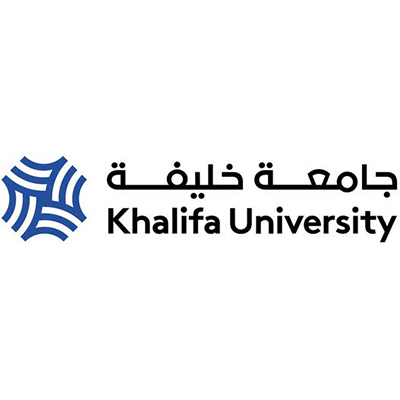Hydrocarbon Exploration and Production

Sponsored by

HYDROCARBON EXPLORATION AND PRODUCTION
Oil and gas production is a vital part of the UAE’s economy, accounting for around 30% of its GDP. Improving the efficiency of its hydrocarbon exploration and production, increasing its recovery, and reducing the environmental impacts of its activities is essential to balance its economic and environmental needs as the UAE transitions towards a knowledge economy. Khalifa University pursues research in hydrocarbon exploration and production through its Petroleum Institute, which serves as an interdisciplinary research unit, engaging a critical mass of KU faculty in the long-term strategic priority of improved hydrocarbon exploration and production. The research subthemes being pursued at Khalifa University are reservoir characterization, evaluation and surveillance, enhanced/improved oil recovery, gas processes, asset integrity, and drilling and completion.
CATALYSIS
The Center for Catalysis and Separation (CeCaS) at KU builds upon the scientific expertise of KU with a multidisciplinary cohort of researchers spanning the different aspects of catalysis: from adsorption to separation. One of its kind within the UAE, CeCaS has the strategic goals of building a regional and international reputation as a leader in its field, and to be a financially sustainable center through industrial grants. The center’s focus areas are catalysis for energy and chemicals; separation and adsorption applications; and multiscale modeling.
Research in catalysis for energy and chemicals is aimed at the development of catalysts that optimize reaction conditions and reactor design for generating green fuels and added-value chemicals from hydrocarbons. The developed catalysts, processes and reactors are integrated with developed separation technologies, and then further coordinated with modeling and optimization work to yield intensified, integrated technologies. Among the deliverables are nanoengineered catalysts, novel reactor designs, and Integrated green processes that generate less waste production and higher energy efficiency.
Research in separation and adsorption applications seeks to develop novel, highly efficient technologies, for separating and purifying the hydrocarbons. In addition, modeling and optimization outcomes guide the selection and optimization of the selective materials/membranes used for separation. The key deliverables include nanoengineered, highly selective materials/membranes, high affinity solvents for separation technologies, as well as novel designs of separation technologies.
Research focused on multiscale modeling has the objective of developing computational models and simulation protocols at different length and time scales in order to assist the development of the new adsorbents, catalytic materials, and separation processes in synergy with the experimental work developed in the center. From the onset, molecular dynamics simulations, kinetics, Computational Fluid Dynamics (CFD) and mechanistic algorithms are performed in order to ensure balanced accuracy and tractability.
ENHANCED OIL RECOVERY
Khalifa University Assistant Professor of Mechanical Engineering Dr. Tiejun Zhang is leading the project on ‘The impact of pore-scale wettability changes on relative permeability characterization in carbonate reservoirs’, which aims to assist the Abu Dhabi National Oil Company in achieving its 70% oil recovery target by revealing the complicated oil trapping mechanisms through characterization of pore-scale wettability and multiphase fluid flow.
During the last three years, the project team has made significant contributions by proposing novel theoretical and experimental approaches to quantify subsurface wettability and predict fluid flow in complex rocks. One of the major breakthroughs was direct prediction of carbonate rock surface wettability with first-principles quantum simulations.
The project also achieved the fabrication of rock micromodels by combining micro-3D printing and wet chemical approaches to mimic actual pore-throat networks and carbonate mineralogy. The project’s as-fabricated geo-lab-on-a-chip microfluidic devices solve the issue of subsurface imaging and subsequent quantification of multiphase flow at the micro scale to evaluate better enhanced oil recovery (EOR) strategies.
The project team also integrated the low field nuclear magnet resonance (NMR) analyzer and magnetic resonance imaging (MRI) with high pressure core flooding systems to evaluate the in-situ water/oil saturation profile in tight carbonate cores. This ongoing research has demonstrated the potential of NMR-MRI as an all-in-one, nondestructive tool to measure the porosity, absolute permeability, and pore size distribution of heterogeneous rock plugs.
By taking advantage of breakthroughs from quantum mechanical simulation, 3D-printed micromodel, microfluidic flow imaging, and NMR/MRI-integrated core flooding, the project has successfully characterized the impact of pore surface wettability and pore-throat network on the permeability of oil and water in tight carbonates, which ultimately contributes to EOR of carbonate reservoirs.
BLACK POWDER
A new probing device that uses microwaves to detect corrosive particles called black powder in pipelines that transport natural gas could help avoid costly plant shutdowns, production losses, and expensive repairs often caused by the material.
Khalifa University Assistant Professor of Electrical and Computer Engineering Dr. Mohamed Abou-Khousa is part of an interdisciplinary team of researchers from the Khalifa University of Science and Technology who have developed the probing device, which has been patented and is now being deployed by the Abu Dhabi National Oil Company (ADNOC).
The research is sponsored by the Gas Processing and Material Science Research Centre (GRC), with the support of ADNOC, ADNOC Gas Processing, Shell Abu Dhabi B.V., Total S.A. and Partex Gas Corporation.
The probe is able to overcome limitations posed by previous microwave-based sensing technologies because it can measure several parameters of the received radio signals simultaneously (that is, after the signals bounce off the black powder and other fluids in the pipeline and travel back to the probe), including their power, phase, and frequency. Additionally, the probe’s low power requirements and durable, air-tight sealed casing enables it to operate in hazardous locations and in high-pressure points.